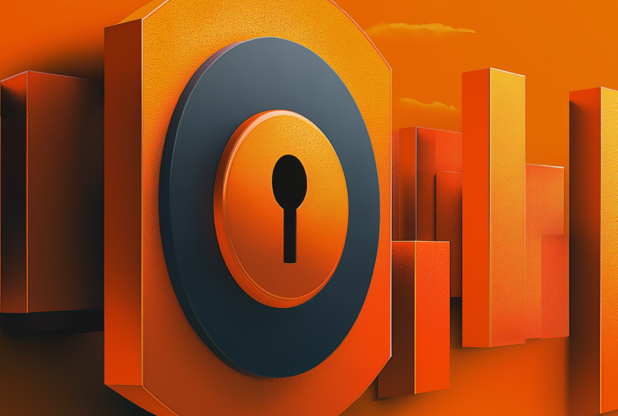Managing data security is like trying to juggle too many balls with one hand — new assets, cloud systems, SaaS apps, and IoT devices all fly through the air as you try to manage each one without dropping anything. Each new addition to the mix introduces even more complexity and potential vulnerabilities, multiplying the workload for you and your team.
Factor in the likely reality that you’re all stretched too thin and relying on legacy IT tools or inherited processes to get things done, and the juggling only gets harder. One unpatched device or overlooked system vulnerability could open the door to a costly data breach — something no IT pro or company wants (or can afford).
So, how do you manage data security without adding staff or blowing your budget? In this blog, we’ll explore how data security management practices — combined with the right supporting tools like PSA and endpoint management via RMM software — can simplify your workflows, automate security tasks, and help you stay ahead of risks.
Data Security Management 101: A Quick Recap
As any IT pro is well aware, data security management refers to the practices, policies, and technology that protect sensitive data from unauthorized access. It’s end-to-end data security for all sensitive data your company creates, accesses, stores, and transmits.
Some capabilities you may use as part of your data security management strategy might include:
- Data backup processes
- Vulnerability management
- Access logging and monitoring
- Mobile device management
- Endpoint security
- Multi-factor authentication (MFA)
- Zero-trust architecture
- Automated patch management
- Automated system updates
- Security and compliance framework implementation
- Security awareness training for staff, vendors, and key stakeholders
What are the main data security threats?
With each new asset, cloud service, or remote access point, your company’s attack surface expands — and so do the risks. In fact, the average cost of a data breach reached $4.45 million in 2023, a 15% increase over the last three years.
This sharp rise highlights how essential it is for internal IT teams to proactively manage security threats and prevent breaches before they occur.
With the right tools and best practices, you can ensure your company isn’t part of this statistic.
Let’s explore some of the main data security threats to be on the lookout for.
Malware
Malware, introduced into your systems via phishing emails, compromised websites, or malicious links, can cripple your systems or grant threat actor access to move across your network, often without you knowing.
As an IT admin working in complex environments, especially those managed by a one-person or small team, you know that malware can quickly spread across your network, disrupting critical operations.
An RMM tool with robust endpoint monitoring and management capabilities is your friend in this scenario. It can help you automatically and continuously monitor your company’s devices for unusual behavior so you can proactively spot potential malware and stop it before it takes your systems hostage.
Distributed denial-of-service (DDoS) attacks
Distributed denial-of-service (DDoS) attacks flood networks, servers, or services with traffic so your authorized users can’t access them.
Like malware, leveraging an endpoint management solution can help you here. Use the software to find and stop DDoS attacks by monitoring network traffic. When you proactively find abnormalities, you can secure access to critical systems and decrease downtime.
Third-party vulnerability
As breaches increase across all industries, there’s been a steady rise in cyber-attacks originating with third-party vendors. The more vendors you have and the more security and compliance requirements your business has, the harder it is to track and manage all your vendors’ IT practices.
That’s because one missed issue with your vendor’s security protocols can expose your company’s data to a potential breach. Endpoint management and PSA tools can streamline vendor management. By monitoring third-party access and logging activities, you can ensure compliance and mitigate these risks.
Improper access management
Without strict access controls, IT teams increase their risk of data exposure. By shifting away from legacy IT solutions to more modern, automated tools like a PSA, you can enforce the least privilege access strategy, ensuring employees and vendors can only access the minimum amount of sensitive data they need to complete their responsibilities.
These tools enable you to enforce role-based access, track changes, and reduce the risk of unauthorized or improper data use and access.
Human error
Whether you’re a one-person team or working with a small group responsible for managing an expanding IT infrastructure, the risk of human error is always present. In particular, being stretched thin and therefore rushed or overworked can lead to misconfigurations that cause accidental data exposures.
Reduce the chance of errors by automating routine tasks like patching and data backups. Additionally, PSAs can be a central dashboard to track help tickets and automate incident response. This ensures you don’t miss potential IT issues so you can proactively identify them before they become significant business disruptors.
Natural disasters and other disruptive incidents
As more companies shift systems and services to the cloud, many still rely on on-prem networks, systems, and data storage. While it may be easier to protect them with a well-defined security perimeter, unlike the more dynamic cloud, on-prem assets put you at risk of data loss and downtime caused by natural disasters like floods, fires, or earthquakes.
Moving to the cloud and automating processes like backups ensures your company’s data is safe, accessible, and quickly recoverable to ensure business continuity.
Outdated software
Outdated software or software vendors no longer support security risks, especially as your company and its corresponding IT landscape expands. Legacy systems are particularly vulnerable to attacks because they lack the latest security patches.
With an endpoint management solution, you can automate software updates, get alerts when systems near end-of-life, and automatically deploy patches across all devices to keep your infrastructure secure and up-to-date.
Unsecure hardware
All network-connected hardware could be a potential entry point for attackers. As mentioned, when you’re juggling a growing number of devices like laptops, printers, and IoT equipment, it’s difficult to ensure everything is patched, secure, and operating as intended. What you need is a way to stop manually searching for issues and instead, track what’s happening in real-time. Ideally, when unpatched or misconfigured devices are detected, you can automatically implement security controls like encryption or multi-factor authentication to protect them.
Weak passwords
Employees and vendors commonly use weak or predictable passwords so they won’t forget them, but threat actors can easily crack these passwords and often use AI or machine-learning tools to rapidly do it for them. Enforce stronger password policies and mandate multi-factor authentication (MFA) to reduce employee reliance on ineffective, static passwords.
Best Practices for Data Security Management
Every IT environment is unique, but there are core strategies that can elevate your data security management practices across the board. We recommend following the below best practices, as they go a bit beyond the basics to help you build a proactive, resilient security posture throughout your organization.
Deploy Layered Security Measures
Antivirus and firewalls alone are no longer sufficient when discussing comprehensive security.
- Implement a multi-layered approach with intrusion detection and prevention systems (IDPS), endpoint protection, and behavior-based threat detection to spot anomalies early.
- Leverage a centralized dashboard that consolidates alerts across these layers to reduce noise and help you prioritize threats based on severity.
- Automate incident response workflows to ensure you act quickly, even during off-hours.
Optimize Vendor and Supply Chain Risk Management
Third-party vendors are a growing source of data breaches.
- Enforce zero-trust policies for vendor access, ensuring all third-party systems meet your security standards before integration.
- Automate access reviews and audit logs to continuously track vendor interactions, and use role-based access control (RBAC) to limit exposure to sensitive data.
- Predefine workflows to handle vendor non-compliance or SLA breaches before they escalate.
Enforce Access Control with Granular Permissions
Effective access management begins with minimizing exposure.
- Rather than assigning broad permissions, implement least privilege policies and ensure that users, including vendors, only access the data required for their role.
- Set automated alerts for permission changes and employ just-in-time access provisioning to grant temporary access only when needed. This minimizes the risk of unauthorized access, even as your workforce scales.
Conduct Continuous Asset Discovery and Tracking
Shadow IT is a major security risk.
- Automate real-time asset discovery to identify every connected device — whether laptops, IoT devices, or virtual machines — and track them through their lifecycle.
- Use this data to manage software licenses, warranties, and compliance obligations.
- Periodically audit asset inventory reports to identify and remove orphaned or unauthorized devices.
Mitigate Human Error with Preemptive Guardrails
Human error remains one of the top causes of breaches.
- Set automated policies to block risky actions, such as downloading unapproved software or storing company files on personal devices.
- Create scripts to guide employees through processes like setting up encryption on new devices, reducing the chance of costly mistakes.
Implement Automated Backups with Testing
Regular backups are essential, but backup plans are only as good as their ability to be restored.
- Automate backups to secure locations, but also schedule routine disaster recovery tests to validate their integrity and accessibility.
- Use these drills to identify weak points and ensure your team is prepared for emergencies.
Streamline Remote Device Management
With remote work on the rise, centralized remote management tools are crucial.
- Ensure your platform allows you to monitor, troubleshoot, and secure devices without requiring on-site visits. This not only improves response times but also reduces disruptions for distributed teams.
- Enable remote wiping for lost or stolen devices to prevent data loss.
Regularly Patch and Monitor Systems for Vulnerabilities
Unpatched systems create vulnerable entry points for attackers.
- Automate patch deployment but ensure you monitor for failed updates or systems nearing end-of-life.
- For critical vulnerabilities, use out-of-band patching to immediately secure systems without waiting for scheduled updates.
- Set alerts for high-risk vulnerabilities so you can respond faster.
Monitor Compliance with Automated Reporting
Data privacy laws like GDPR and CCPA require continuous compliance efforts.
- Automate compliance tracking with pre-built templates and reporting tools to ensure policies are enforced organization-wide.
- Use audit logs to quickly address any compliance gaps and prepare for regulatory audits with confidence.
Building Resilient Data Security Strategies for the Future
Data security management is a continuously evolving challenge, especially as IT infrastructures grow more complex and businesses rely on increasingly distributed assets and cloud systems. By taking a proactive, layered approach — enforcing strong access controls, automating key tasks, and continuously monitoring vulnerabilities — your internal IT team can stay ahead of emerging threats.
Ultimately, implementing effective security strategies and tools ensures your organization can safeguard today’s assets while staying agile in the face of evolving cybersecurity threats. A proactive approach to data security management strengthens your defenses, supports seamless growth, and positions your business to adapt to new challenges, ensuring long-term stability and scalability.
Share














